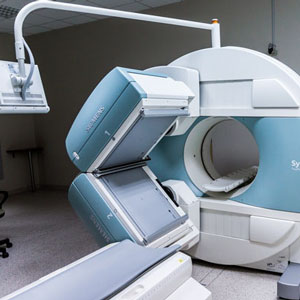 If you have back or neck pain, you may have wondered if you should have some sort of imaging in order to identify the problem. But how do you know if you need an MRI, a CT, or an x-ray? What is the difference between these images? And more importantly, are they safe?
If you have back or neck pain, you may have wondered if you should have some sort of imaging in order to identify the problem. But how do you know if you need an MRI, a CT, or an x-ray? What is the difference between these images? And more importantly, are they safe?
Each of these methods of imaging are for very specific purposes and reveal different information about your spine, depending upon which images are taken and how. It is extremely important for your doctor to order the correct type of image to identify whether or not your spinal pain is anatomical, pathological or mechanical.
A credentialed spine care specialist is specially trained to look at your body as a whole and provide differential diagnosis (look for multiple causes of symptoms) to rule out serious pathologies (such as, infection, fracture, cancer, inflammatory joint disease). A primary spine care specialist will determine the medical necessity of imaging, such as x-rays, MRIs, and CTs, and can specify how they should be taken. They are also specifically trained to examine, evaluate, and assess these images.
As a fully credentialed primary spine care specialist, I am fully credentialed in MRI spine interpretation and have fellowship training in MRI physics and interpretation recognized through SUNY Buffalo, Jacobs School of Medicine. I provide evidence-based management typically for patients with mechanical spine pain. If anatomical or pathological issues are identified, I will thoroughly discuss the images and findings with you and refer you with the images to the most appropriate doctor to treat your condition.
The Importance of Diagnosing the Primary Problem
Proper evaluation and diagnosis of the problem is imperative. Treating the symptoms may make you feel better temporarily. However, only treating symptoms will not take care of the problem. Failure to find and correct the problem could lead to more spinal issues, pain, and possibly permanent damage.
Proper imaging can demonstrate the location and severity of the problem. Proper evaluation of the images allows the primary spine care specialist to determine the most appropriate course of treatment and/or the best doctor to treat your pain. Diagnosis of your spine pain may require the use of x-rays, CTs, or MRIs.
Types of Medical Imaging
X-rays
X-ray imaging creates pictures of the inside of your body. These images show the parts of your body in different shades of black and white. Different tissues absorb different amounts of radiation. Calcium absorbs x-rays the most, so bones look white. Fat and other soft tissues absorb less and look gray.
X-rays are particularly suited for discovering biomechanical problems, altered joint motion, bone degeneration, infection, fracture and instability, as well as certain types of tumors and other pathologies.
In order to properly diagnose mechanical spine pain, precise measurements of the spine are made in order to determine the exact cause of pain. At Precision Spinal Care, I use the AMA Guides to the Evaluation of Permanent Impairment, 5th Edition. This manual gives precise guidance to measurements for reading and evaluating x-rays and quantifies the “loss of motion segment integrity” when spinal ligaments are compromised.
Risks of X-rays
X-rays use low dose ionizing radiation and pose minimal risk to healthy tissue. Typically, an x-ray exposes you to the same amount of radiation you would experience in a normal environment over a ten-day period.
MRIs
Magnetic resonance imaging (MRI) uses a large magnet and non-ionizing radio waves to look at organs and structures inside your body. Health care professionals use MRI scans to properly visualize the soft tissues associated with the spine including spinal discs and nerves. MRIs are very useful for examining the brain and spinal cord.
There are two types of MRI machines: The traditional MRI is a closed tunnel-shaped machine. The scan is painless.
The open MRI is a machine that is open on the sides rather than a tube closed at one end, so it does not fully surround the patient. It was developed to accommodate the needs of patients who are uncomfortable with the narrow tunnel and noises of the traditional MRI and for patients whose size or weight make the traditional MRI impractical. Newer open MRI technology provides high-quality images for many but not all types of examinations.
Risks of MRIs
An MRI takes longer and requires that you must lie perfectly still. The MRI technician must use the proper protocols (slice thickness and gaps) or important pathology could be missed for a proper prognosis (there is a 43.6% error rate in reporting disk pathology). When I order spinal MRI’s for my patients, we make sure the order includes the proper protocols to avoid these errors.
MRI might not be appropriate if you:
- Have pieces of metal in your body (for example, shrapnel, a bullet injury or if you are a welder).
- Have metal or electronic devices in your body, such as a cardiac pacemaker or a metal artificial joint.
- Have claustrophobia.
Be sure to alert your doctor to any of these conditions!
CT Scans
Computed Tomography, or a CT scan, is a computerized x-ray that aims a narrow beam of X-ray at a patient and quickly rotates around the body, producing signals that are processed by a computer to generate cross-sectional images of the body.
These slices contain highly detailed information. They can be digitally stacked together to form a three-dimensional image of the patient for easier identification and location of basic structures as well as possible tumors or abnormalities.
During a CT scan, you lie still on a table. The table slowly passes through the center of a large X-ray machine. The test is painless. During some tests you receive a contrast dye, which makes parts of your body show up better in the image. Doctors use CT scans to look for:
- Fractures (broken bones)
- Cancers
- Blood clots
- Signs of heart disease
- Internal bleeding
- People with previous surgeries
- Pars defects and other bony abnormalities of the spine
Risks of CT Scans
CT scans use high intensity ionizing radiation, which has the potential to cause biological effects in living tissue. The risk increases with the number of exposures. However, the risk of developing cancer from a CT scan is generally small in healthy adults.
If you are pregnant, a CT scan poses no known risks to the baby if the area of the body being imaged isn’t the abdomen or pelvis. Typically doctors prefer to use an MRI or ultrasound unless absolutely necessary.
Contrasting agents may cause allergic reactions, or in rare cases, temporary kidney failure. You should not use IV contrast agents if you have abnormal kidney function. Make sure you alert your doctor if you have compromised or abnormal kidney function.
Children are also more sensitive to ionizing radiation and a higher relative risk for developing cancer than adults. You may want to ask the technologist or doctor if the machine settings can be adjusted for children.
If you cannot have an MRI, be aware that image resolution of soft tissue, such as visualizing discs and nerves, is not as good with a CT. If you had a prior MRI, and the doctor knows what they are looking for, a CT may suffice. Check with your doctor to determine which alternatives are best.
Which Medical Imaging Is Best for You?
Remember, you are a partner in your healthcare decisions. Which image is best depends upon your specific symptoms and the type of injury or cause of your spine pain. A credentialed spinal care specialist is your best resource for information on which type of imaging you should receive.
Thorough evaluation is the first step to determining if your spine pain is anatomical, pathological, or biomechanical. A credentialed spine care specialist should be able to explain and guide you to the type of imaging that is medically necessary and most appropriate for your specific pain.
At Precision Spinal Care we are happy to help you determine the best way to address your specific needs. If we can help, we will. If we determine it is best for you to see a different specialist, we will help you find a doctor who can address your needs.
Call our office at (757) 382-5555 to speak to the doctor or set up a consultation. You can also set up an appointment through our webpage.

